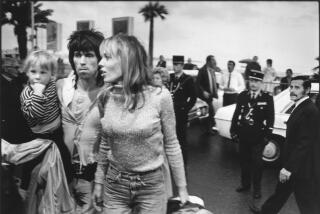Women Writers on Women Rockers
“TROUBLE GIRLS: THE ROLLING STONE BOOK OF WOMEN IN ROCK”
Edited by Barbara O’Dair
Rolling Stone Press, $25
* * 1/2
The phrase “women in rock” has come to be nothing so much as an unwarranted (and often unwanted) classification that jams together artists who otherwise have no connection. This anthology of new essays feeds the notion of a gender-based genre, particularly since it recruits only women writers to examine the subject.
Even though a few chapters, such as Donna Gaines’ reflection on ‘60s girl groups, do resonate with a “feminine” perspective, it smacks of gimmickry to recruit only women to create this book. Worse, it implies that female emotions are somehow different from human emotions and are best understood by women. That’s the sort of thinking that has helped to keep women marginalized in all walks of life.
Nevertheless, “Trouble Girls” aims more to illuminate the scope of “women in rock,” by examining their myriad roles in the music, from precursors right up through today’s post-feminist heroines. Given such a broad palette, it’s no surprise that the results are decidedly mixed.
Although packed with discographies, photographs and lists of Top 40 hits, “Trouble Girls” is not purely a reference book. Some chapters distill troves of information about whole genres into concise, if truncated, histories. While often enlightening, these overviews allow neither the writer nor the reader much room to breathe. Chapters that focus on a single artist can provide more depth (such as Carol Cooper’s revealing reexamination of Billie Holiday), but not necessarily: The most revelatory thing about Terri Sutton’s splintered portrait of Janis Joplin might just be that the writer felt she had nothing to add to an already much-examined subject.
The writers usually present their subjects in the context of the larger history they inhabit, but that history can be sketchy, and there’s no consistent stance from which women’s role in rock is viewed. Some writers assert that rock is a “man’s world,” where women were excluded or marginalized. Others contradict this simply by holding up the many female contributions to the music’s core essence.
Most interesting, while the historical discussions of women’s contributions make sense, the closer the book gets to the present, the harder it becomes to understand the logic in separating women from rock. That may be the most significant revelation here: By now, to extract the female threads from rock’s tapestry is to unravel the fabric completely.
*
Items are rated on a scale of one star (poor) to four stars (excellent).
More to Read
Sign up for our Book Club newsletter
Get the latest news, events and more from the Los Angeles Times Book Club, and help us get L.A. reading and talking.
You may occasionally receive promotional content from the Los Angeles Times.









